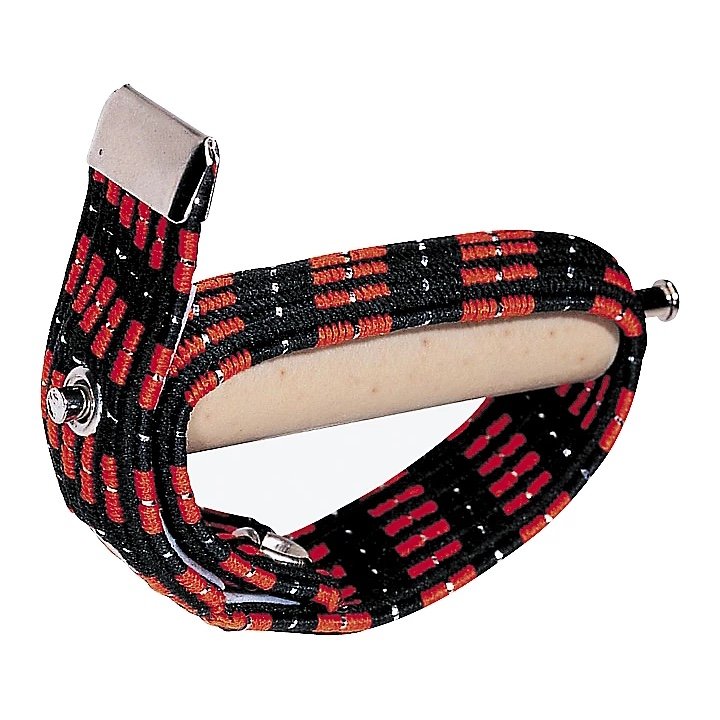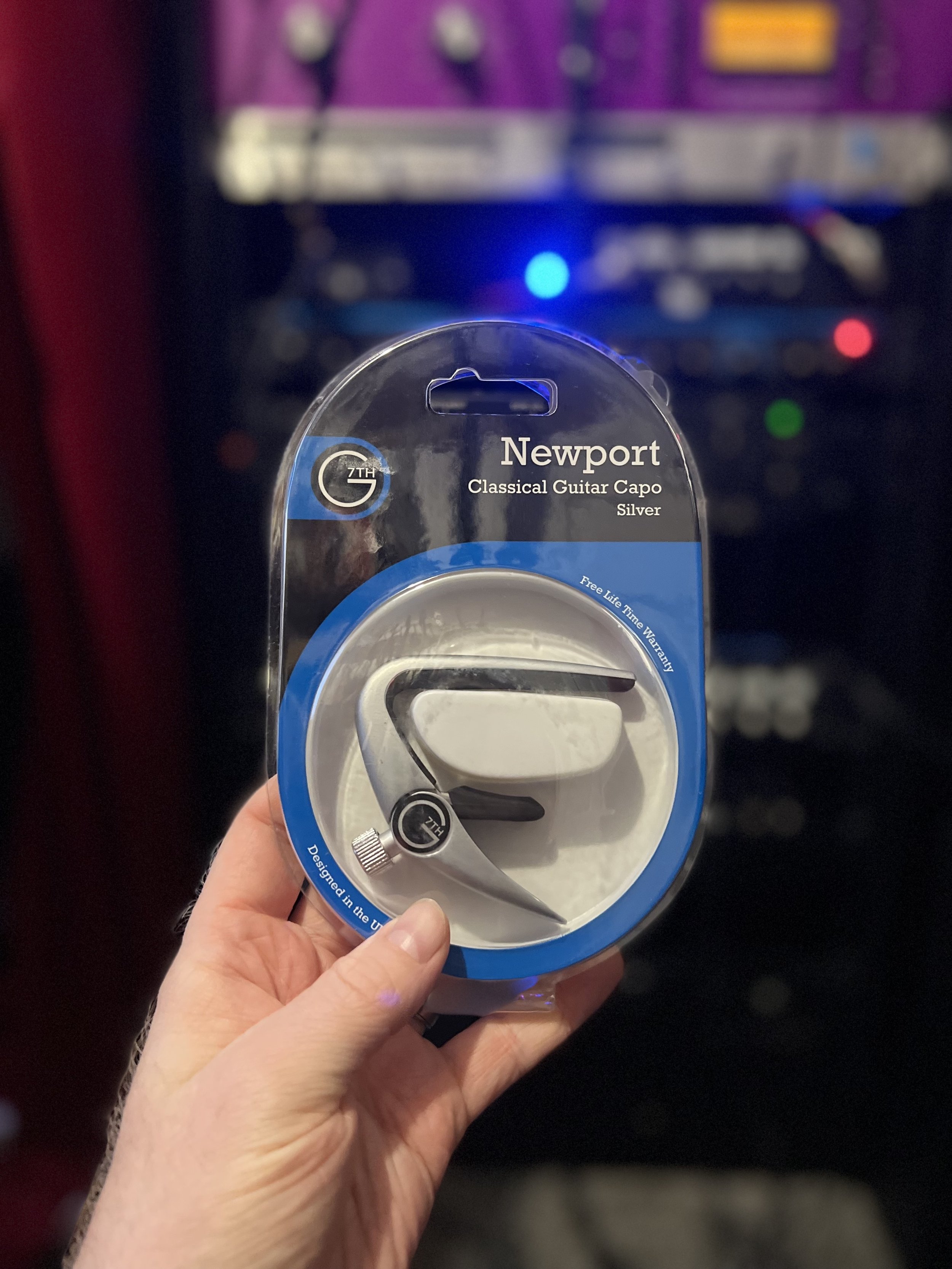G7th Performance 3: The Best Guitar Capo
Guitar capos are one of those under-appreciated accessories. Unfortunately, I've seen many guitarists over-consider the price tag when picking a capo. Maybe because capos have an unfortunate stigma of being cheaters, guitarists feel dirty about buying a capo.
I would like first to address this absurd idea before we discuss variances in capos and why you should care what capo you use.
A capo in no way is a cheater. We use capos to get an open sound on the guitar in different key signatures. It's rather ignorant to think it's simply about making parts easier to play. Yes, sometimes parts are easier to play with a capo. But, first and foremost, I consider sound when choosing to play with a capo.
If you play a G bar chord and compare that to an open position G chord, do they sound the same? No, they don't.
The guitar has a limitation to the key signatures you can play with open sounds. So one reason players expanded open tunings was to take advantage of the open sound of the guitar with more flexibility within specific key signatures.
Open tunings, capos, and a combination of the two are ways we get open sounds out of an acoustic guitar in various key signatures. Note: When I say open sounds, I mean using a lot of open strings and "cowboy" chord voicings using a lot of open strings.
Now that I got that rant out of my system let's discuss the finer details of capos. I'm going to work my way backward from best to worst. If you want a one-sentence spoiler to the best capo to buy, it's the G7th Performance 3 capo. Ok, now that you got me to spill the beans, let's discuss why the G7th is the best.
For your Consideration
The quality of the capo you use can affect your tuning, which means that most capos will push your guitar out of tune when you put them on. In addition, trigger-style caps like the Kyser add downward pressure to the strings making them go sharp, which is a major drawback of any trigger-style capo.
The marketing behind trigger capos is the idea that they allow for quick changes. But, I would ask you to ponder this question: What good is changing a capo super fast if you then have to spend a lot of time re-tuning?
An unfortunate reality is I've seen many guitarists throw a Kyser on and not check their tuning, resulting in anil on-blackboard-like tuning effects to my ears.
Please, for the love of humanity, always check your tuning when putting a capo on or off. Out-of-tune guitars destroy performances. Few capos stay in tune when you take them on and off, except G7th Performance 3. But, even with that, I still check my tuning as it's that important.
With the G7th, checking the tuning is merely ceremonial. When using a trigger capo, it's time to pull up a chair and get comfortable. You're going to be there for a while.
Elastic Band Man
One of the cheapest styles of capos (and my very first one) is a capo that uses an elastic band to wrap around the neck. Unfortunately, elastic band-style capos suffer even worse tuning than the Kyser trigger style. So I'm not even going to write much about them. Just avoid them.
Shubb
Shubb clamp capos have been around for a long time and are made well. So I don't have an issue with quality control, But I have a problem with the design.
To adjust the tightness of the capo, you have to tighten or loosen a screw in the back of the Shubb capo. Sometimes, adjusting this set screw can be a challenge. Also, it's pretty small and not the best design for fast-paced environments.
G7th makes a really good trigger capo called the Newport I use for nylon string guitar that uses a set screw in the back, but the screw is much bigger and easy to adjust on the fly.
If you generally play with a capo on fret 1-3 and don't have the need to change capo positions quickly, then you could make the Shubb work.
The issue can be that if you don't pre-adjust the Shubb and place it high on your fretboard, it can cause tuning problems. Tuning issues are a deal breaker when in the studio and playing live.
You will see a lot of variation on these three basic capo designs on the market from companies like Dunlop, etc. So, try to think of design rather than brand.
The one design you won't see anywhere else is the G7 Performance 3. It's a patented design.
Thalia
I've used the Thalia line of capos a lot. The Thalia, like the G7th, gets filed in the high-end capo category. Thalia has their way of tackling tuning issues with capos, and it works. However, their design isn't as flexible as the G7th.
The concept behind the Thalia design is swapping inserts in the capo that match the radius of your guitar neck. The Thalia can be a good match if you're just using one guitar. However, I find myself using a variety of guitars in live and studio situations.
It doesn't make sense for me in a live situation to have several capos, each paired with a guitar. It's more practical to have one capo that will work with multiple guitars. The Thalia capos do come in custom designs and look quite lovely.
G7th
I've been dropping not-so-subtle hints about the G7th line of capos all this time. You would think I work for the company. I don't. I'm happy to use a product I can rely on in sessions and tours.
Time moves fast onstage. When I played Mountain jam or the NOLA Jazz Fest, the stage turnover was like an Olympic event. There is no sound check, only a line check. You plug your gear in and make sure it's working. You maybe ask for a few things in your monitors (although I usually don't like anything in my monitors, story for another time). Then it's go time full force.
“It doesn’t make sense for me in a live situation to have several capos, each paired with a guitar. It’s more practical to have one capo that will work with multiple guitars. ”
Festival gigs are jam-packed as you don't have as much time as a typical theater or club show. So, artists generally like to move between songs quickly.
That means I have to switch guitars, adjust tunings and use capos. The last thing I want is to play the first chord of a song and have it out of tune in front of a discerning audience.
The G7th Perfrocnae 3 capo is the only capo I could reliably do this with, acting as my own guitar tech.
G7th’s ART technology allows the capo to adjust to any radius guitar neck. In addition, ART adds the ability to when placing the capo to apply pressure similarly to holding down the strings, ensuring I don't use too much pressure with the capo.
Tip: how not to lose your capo. Capos are an accessory that tends to get lost by most guitarists. To minimize the loss of capos, I have a strict routine I follow when ripping down my rig. The first thing I pack is guitars, then capos and slides. Then pedalboard, and lastly, the amp.
I never break that formula. The capo and slides go into the same bag and compartment every night. The trick is never to deviate.
Systematic approaches to tearing down will ensure you don't lose cables and accessories.
It's not often I have such a clear answer when recommending gear. Sometimes when people ask about what fuzz or chorus to buy, I include a questionnaire about what they are looking for. But, what capo is obvious. Just buy the G7th Performance 3 capo.














